Abstract
Allison, James L. (Walter Reed Army Institute of Research, Washington, D. C.), Richard E. Hartman, Roberta S. Hartman, Alan D. Wolfe, Jennie Ciak, and Fred E. Hahn. Mode of action of chloramphenicol. VII. Growth and multiplication of Escherichia coli in the presence of chloramphenicol. J. Bacteriol. 83:609–615. 1962.—Significant increases in both total and viable numbers of bacteria in cultures of Escherichia coli B/r were shown to occur in the presence of “bacteriostatic concentrations” (50 μg/ml) of chloramphenicol. Bacterial viability began to decline between one and two generation times after the addition of the antibiotic. It is inferred that unbalanced growth and cellular division occurring in the absence of protein synthesis give rise to physiologically inhomogeneous bacterial populations. Analytical studies on such populations, therefore, do not necessarily determine events that are typical for all individual bacteria in the culture. These considerations emphasize further the need for elucidating the primary action of chloramphenicol in isolated, cell-free systems that are free of physiological complications.
Full text
PDF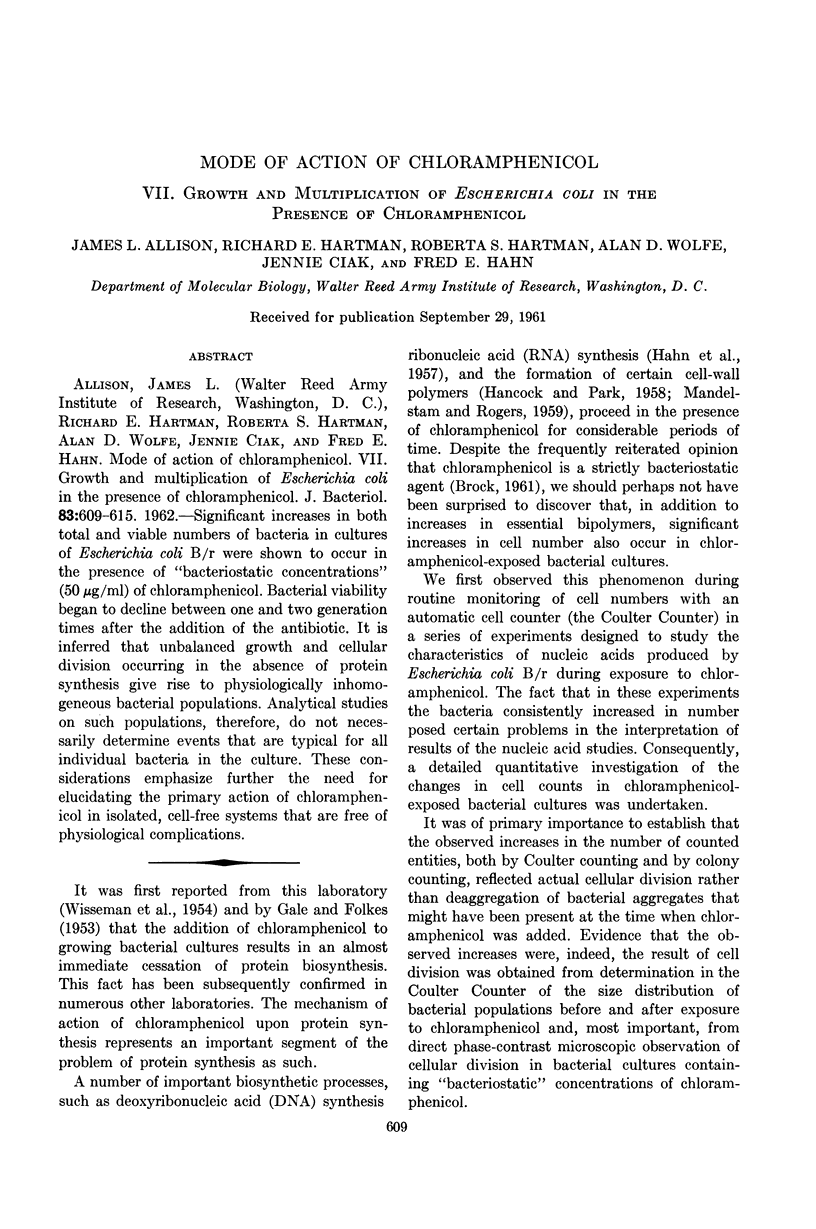
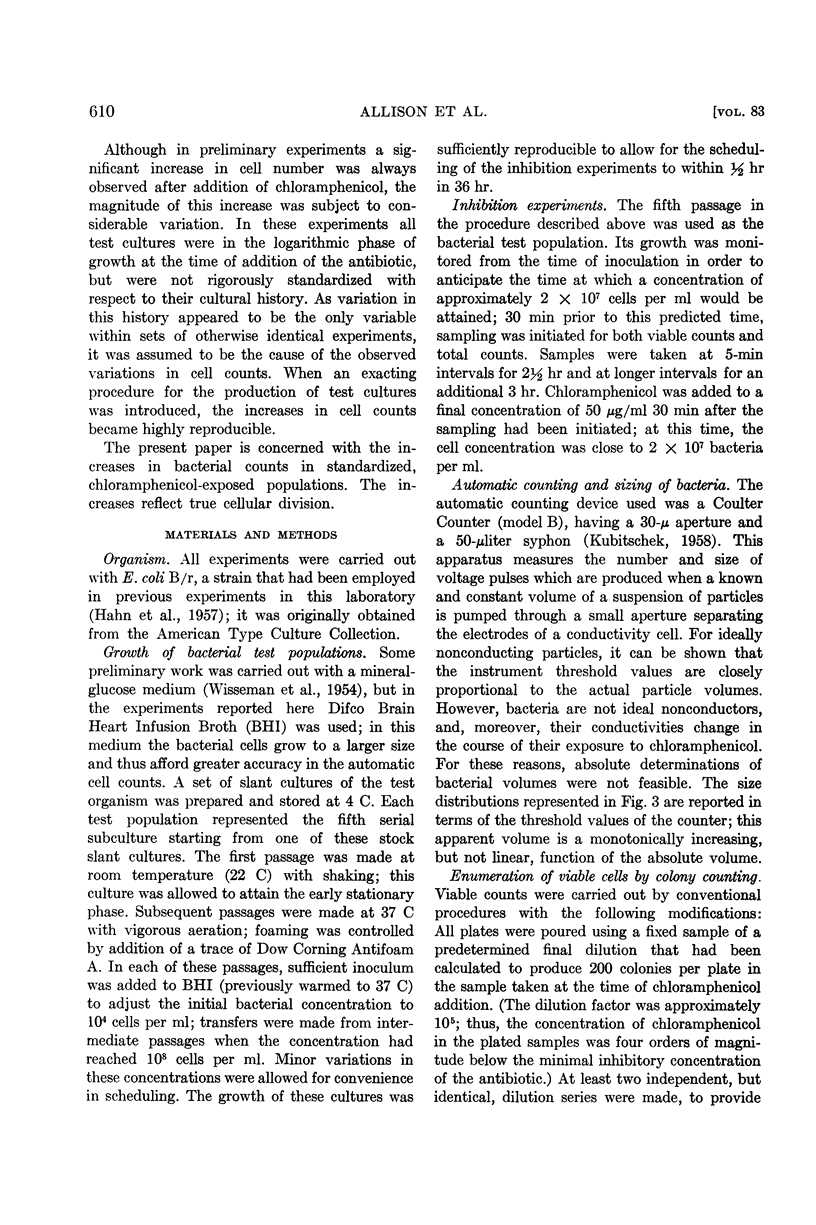
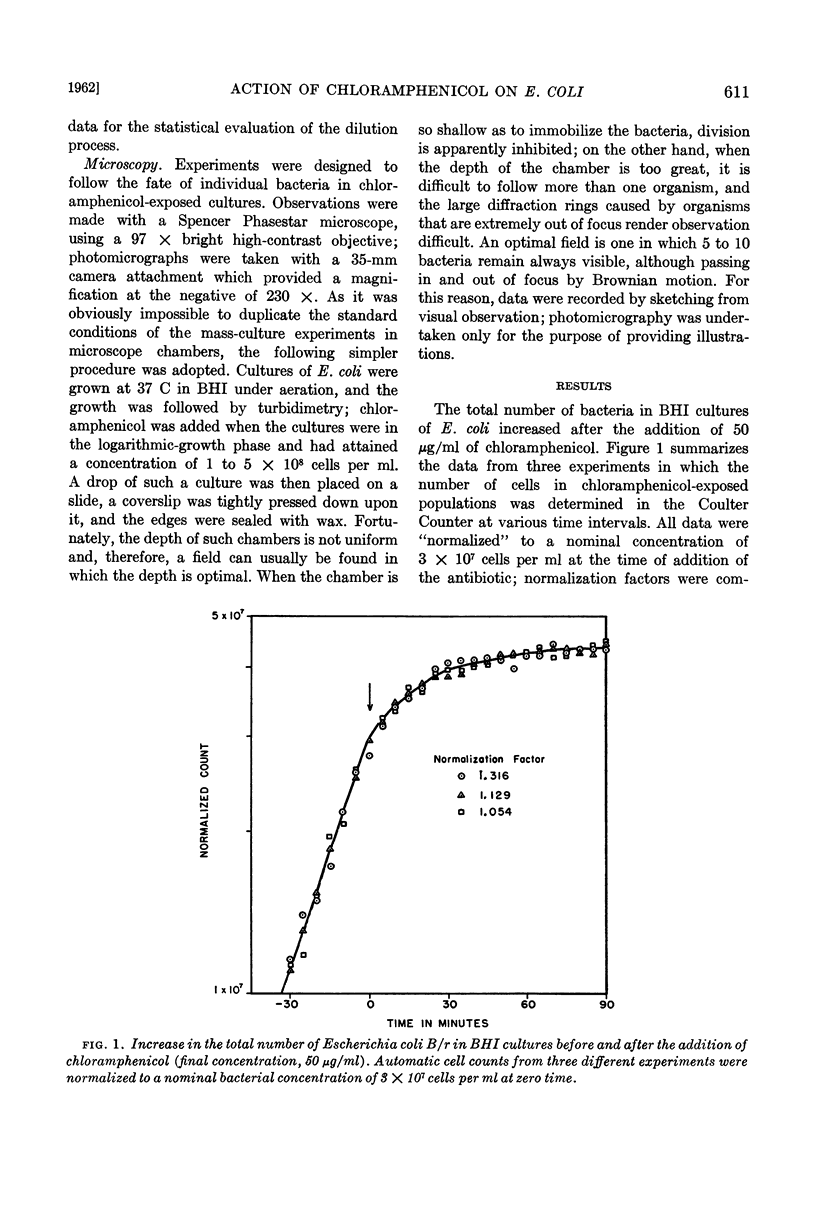
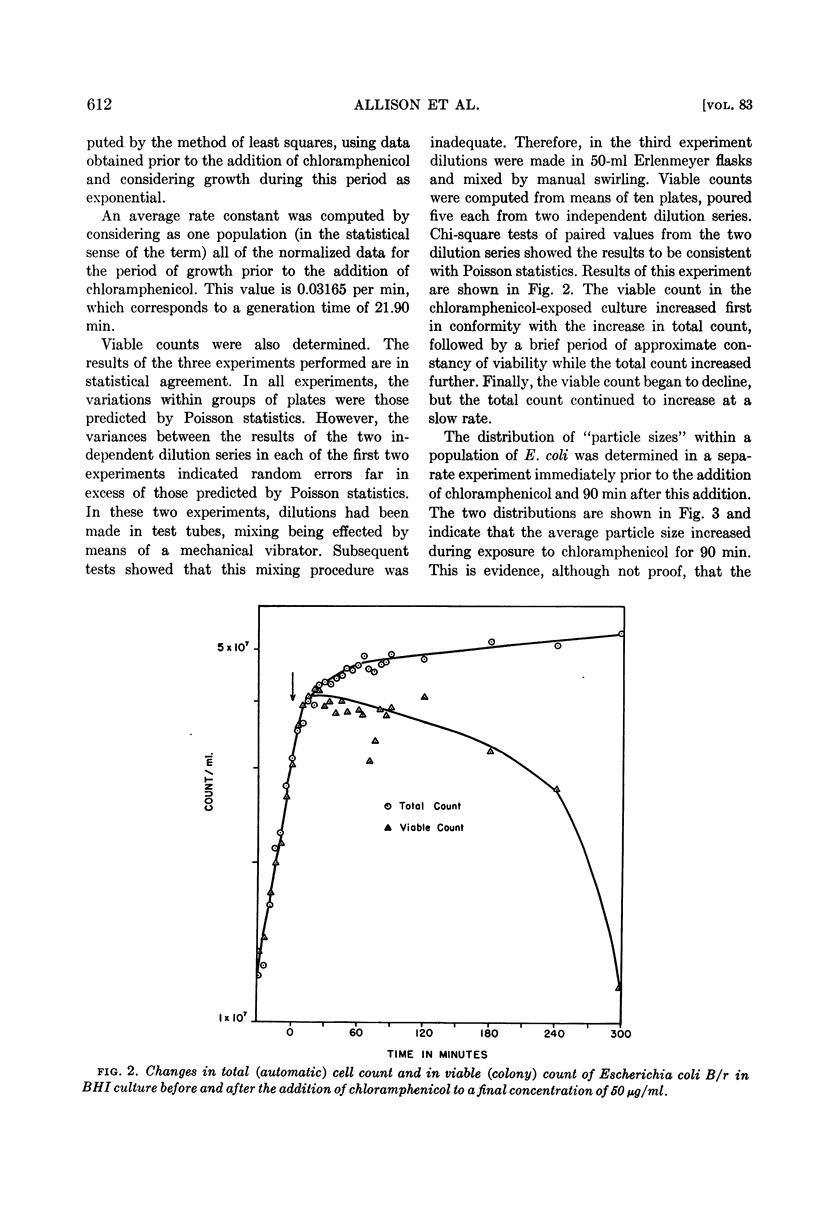
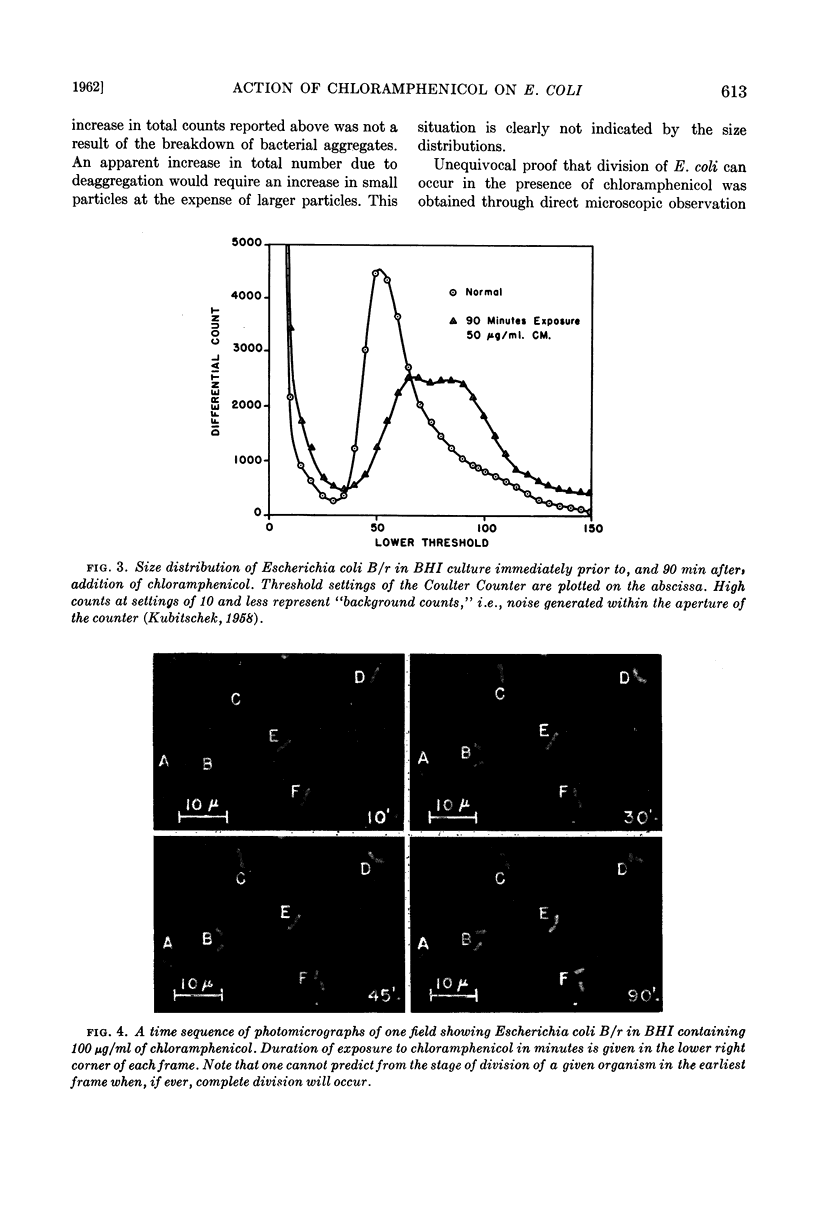
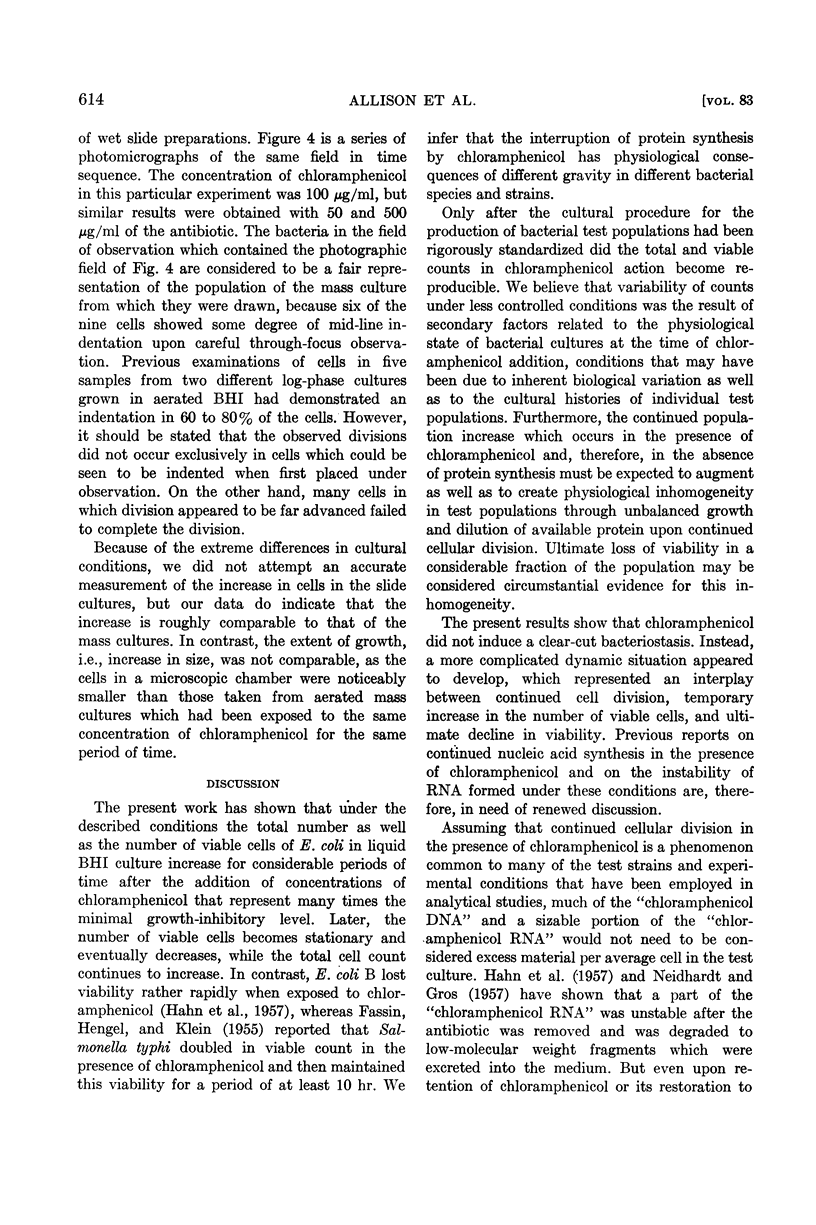
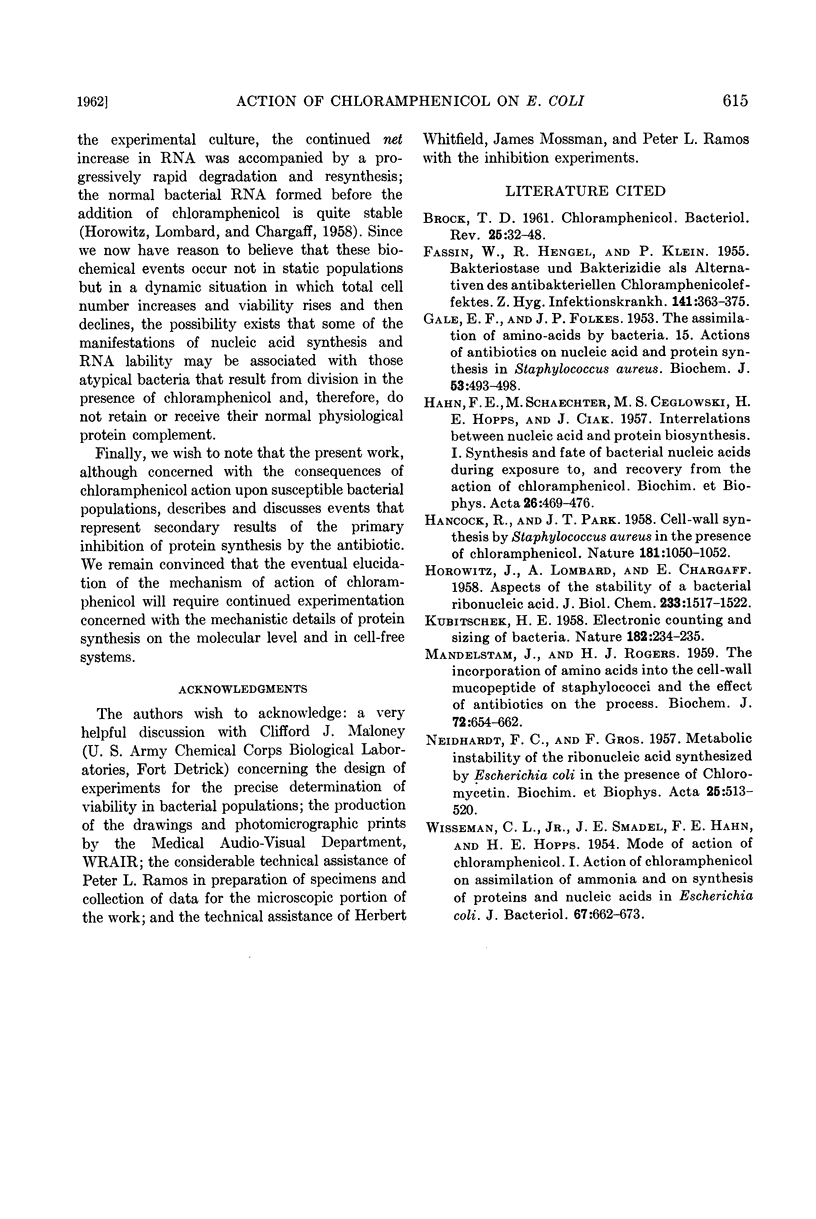
Images in this article
Selected References
These references are in PubMed. This may not be the complete list of references from this article.
- Brock T. D. CHLORAMPHENICOL. Bacteriol Rev. 1961 Mar;25(1):32–48. doi: 10.1128/br.25.1.32-48.1961. [DOI] [PMC free article] [PubMed] [Google Scholar]
- FASSIN W., HENGEL R., KLEIN P. Bakteriostase und Bakterizidie als Alternativen des antibakteriellen Chloramphenicoleffektes. Z Hyg Infektionskr. 1955;141(4):363–375. [PubMed] [Google Scholar]
- GALE E. F., FOLKES J. P. The assimilation of amino-acids by bacteria. XV. Actions of antibiotics on nucleic acid and protein synthesis in Staphylococcus aureus. Biochem J. 1953 Feb;53(3):493–498. doi: 10.1042/bj0530493. [DOI] [PMC free article] [PubMed] [Google Scholar]
- HAHN F. E., SCHAECHTER M., CEGLOWSKI W. S., HOPPS H. E., CIAK J. Interrelations between nucleic acid and protein biosynthesis. I. Synthesis and fate of bacterial nucleic acids during exposure to, and recovery from the action of chloramphenicol. Biochim Biophys Acta. 1957 Dec;26(3):469–476. doi: 10.1016/0006-3002(57)90092-6. [DOI] [PubMed] [Google Scholar]
- HANCOCK R., PARK J. T. Cell-wall synthesis by Staphylococcus aureus in the presence of chloramphenicol. Nature. 1958 Apr 12;181(4615):1050–1052. doi: 10.1038/1811050a0. [DOI] [PubMed] [Google Scholar]
- HOROWITZ J., LOMBARD A., CHARGAFF E. Aspects of the stability of a bacterial ribonucleic acid. J Biol Chem. 1958 Dec;233(6):1517–1522. [PubMed] [Google Scholar]
- KUBITSCHEK H. E. Electronic counting and sizing of bacteria. Nature. 1958 Jul 26;182(4630):234–235. doi: 10.1038/182234a0. [DOI] [PubMed] [Google Scholar]
- MANDELSTAM J., ROGERS H. J. The incorporation of amino acids into the cell-wall mucopeptide of staphylococci and the effect of antibiotics on the process. Biochem J. 1959 Aug;72:654–662. doi: 10.1042/bj0720654. [DOI] [PMC free article] [PubMed] [Google Scholar]
- NEIDHARDT F. C., GROS F. Metabolic instability of the ribonucleic acid synthesized by Escherichia coli in the presence of chloromycetin. Biochim Biophys Acta. 1957 Sep;25(3):513–520. doi: 10.1016/0006-3002(57)90521-8. [DOI] [PubMed] [Google Scholar]
- WISSEMAN C. L., Jr, SMADEL J. E., HAHN F. E., HOPPS H. E. Mode of action of chloramphenicol. I. Action of chloramphenicol on assimilation of ammonia and on synthesis of proteins and nucleic acids in Escherichia coli. J Bacteriol. 1954 Jun;67(6):662–673. doi: 10.1128/jb.67.6.662-673.1954. [DOI] [PMC free article] [PubMed] [Google Scholar]



